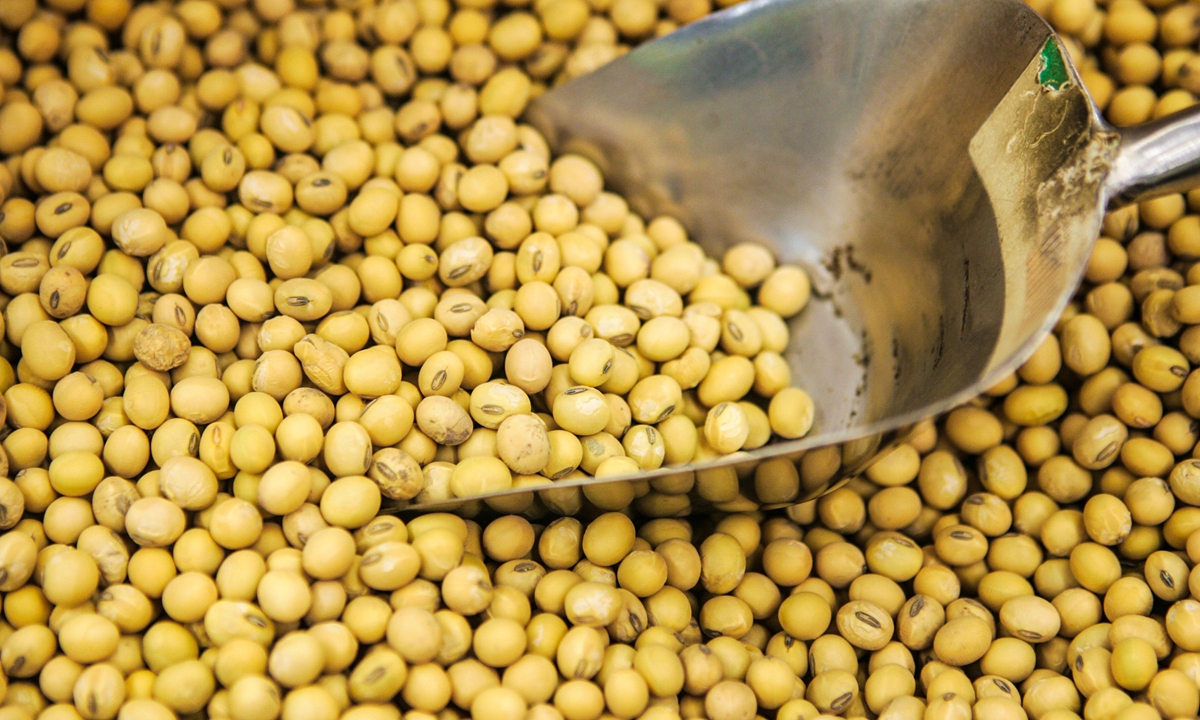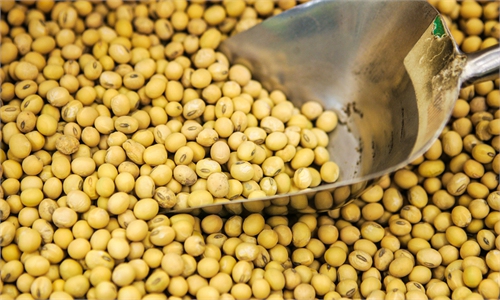China to boost soybean self-sufficiency to diversify, stabilize supplies amid market recovery: MOA

Soybean Photo: VCG
China's Ministry of Agriculture and Rural Affairs (MOA) met on Thursday with soybean industry participants, urging them to boost domestic cultivation, production and sales to further stabilize supplies of soybean, an important strategic good, as the nation expects a market rebound.
Experts said that this is a follow-up effort by the government to improve the self-sufficiency rate of soybean supplies. China aims to balance the risks of heavy reliance on any single source, including the US, which provides about one-third of China's total soybean supplies.
With China's optimized epidemic controls, business and production are recovering, and the soybean market is expected to pick up after the Spring Festival, driven by demand, the MOA said.
To meet rising potential demand, Thursday's meeting asked local governments to take steps such as policy support to stabilize planting areas and production capacity for soybeans.
Companies need to be proactive about soybean purchasing and processing, while making efforts in the areas of innovation, brand building and other aspects of development, according to the MOA.
Medium- and long-term visions are important when companies make these preparations, the meeting said.
Domestic soybean industry associations, which also attended the event, were asked to strengthen market monitoring and early warning and boost the industry's upgrading.
Affected by several factors, including the pandemic, soybean prices have been volatile in the new season and consumption has been weak.
The authorities are working on support policies to keep the market within a rational range for the benefit of farmers, according to the MOA.
The meeting came just in time since the market is making a gradual recovery after the tough battle against COVID-19, experts said.
"It sends a clear message that, despite the weak domestic consumption, things will improve," Wang Gangyi, a professor at Northeast Agricultural University, told the Global Times on Thursday, noting that market confidence is improving.
Refined edible oil, which relies heavily on soybean supply, has always been a major factor in the costs of the food service industry. Wang said that higher soybean output will ultimately shore up downstream consumption, a major driver of China's economic recovery.
Another highlight of the government's efforts to promote self-sufficiency is a move to stabilize long-term supplies, experts said.
China consumed more than 100 million tons of soybean-related products in 2021, leading the world. But about one-third of the soybeans were imported from the US, making it one of the largest suppliers to China, even though the import volume fell.
China also imported soybeans from other countries such as Brazil.
"The improvement of our own production capacity will not replace imports to a large extent, but it will allow China's soybean supply to reach a reasonable balance, so that it will not be overly dependent on any particular country," Wang said.
In recent years, the Chinese government has used multiple strategies to expand the output of soybeans and edible oil crops simultaneously in tapping the potential of this important agricultural product. Such efforts led to expansion of soybean oil crops.
In 2022, the self-sufficiency rate of soybeans rose by 3 percentage points year-on-year, and the self-sufficiency rate of edible vegetable oil increased by 1.6 percentage points year-on-year, Pan Wenbo, director of the planting management department of the MOA, said at the press briefing of the State Council Information Office on Wednesday.
China's soybean planting area reached 154 million mu (10.26 million hectares) in 2022, an increase of 27.43 million mu, with output of 20 million tons for the first time, a historic high.

